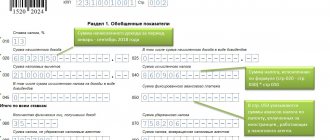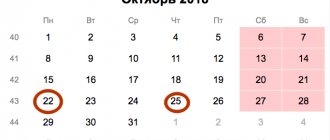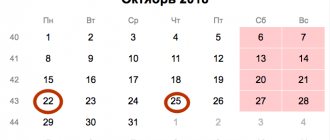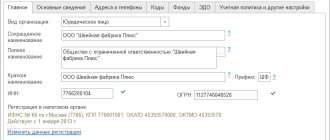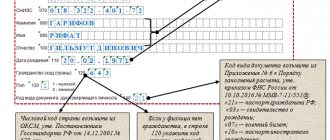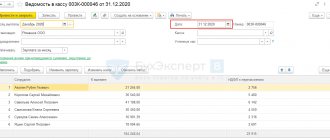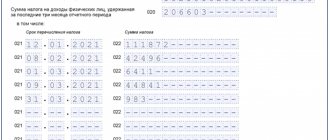Home — Documents
- Express “navigator” by calculation
- Section 4. “Recalculations”
- Insurance part of the calculation
- Loss of right to preferential tariff
- Personalized information
Based on the results of 9 months of 2015, you must report to the Pension Fund on accrued and paid insurance contributions for compulsory pension insurance and compulsory health insurance no later than November 16, 2015 - in case of submitting a calculation on paper, or no later than November 20, 2015 - when generating reports in electronic form (clause 1, part 9, article 15 of the Law of July 24, 2009 N 212-FZ). The report is presented in the form RSV-1 of the Pension Fund of the Russian Federation, the form of which and the procedure for filling it out are approved by Resolution of the Board of the Pension Fund of the Russian Federation dated January 16, 2014 No. 2p. The latest changes to this form were made by Resolution of the Board of the Pension Fund of June 4, 2015 No. 194p. These innovations should have been taken into account already when preparing pension reporting for the first half of 2015. However, at the same time, certain problematic issues were also revealed, which we will consider so that the report for 9 months goes smoothly.
Introductory information
Let us recall that the current RSV-1 form consists of six sections (see “New RSV-1 form: features of filling out and submitting calculations for the first half of 2015”). Each policyholder at the end of each reporting period (including 9 months) must fill out and submit as part of DAM-1:
- title page;
- Section 1 “Calculation of accrued and paid insurance premiums”;
- subsection 2.1 “Calculation of insurance premiums according to the tariff and additional tariff.”
The remaining sections of the form are filled out only if the relevant indicators are available.
Thus, Section 6 “Information on the amount of payments and other remuneration and the insurance experience of the insured person” is formed for each employee who was in an employment relationship with the insured, or with whom a civil law or copyright agreement was concluded, if during the last three months of the reporting period the employee received contributions or had information about his or her length of service. This conclusion follows from the provisions of paragraphs 3 and 27 of the Procedure for filling out the RSV-1, as well as the Rules for checking the RSV-1 (approved by order of the PFR board dated July 31, 2014 No. 323r).
Thus, section 6 must be included in the RSV-1 for 9 months, if for the period from July to September the insurer accrued payments to at least one employee or during this period the employee retained length of service (for example, he was on leave without pay or maternity leave). If there is information about payments only for previous periods from the beginning of the year (for example, if the only employee was fired in June), then section 6 is not formed.
Section 6 consists of subsections 6.1 - 6.8. Let's look at some features of filling them out.
What codes to enter in the DAM, taking into account the reduced tariffs for contributions
In connection with the adopted Federal Law No. 102-FZ dated April 1, 2020, SMEs can apply reduced insurance premium rates.
Such payers enter the payer code “20” in the calculation. The codes of insured persons are indicated as follows:
- MS - individuals, from whose portion of payments and remuneration, determined at the end of each calendar month as an excess over the minimum wage established by federal law at the beginning of the billing period, insurance premiums are calculated by payers recognized as small or medium-sized businesses in accordance with the Federal Law of July 24, 2007 No. 209-FZ “On the development of small and medium-sized businesses in the Russian Federation”;
- VZHMS - persons insured in the OPS system from among foreign citizens or stateless persons temporarily residing in the territory of the Russian Federation, as well as foreign citizens or stateless persons temporarily staying in the territory of the Russian Federation who have been granted temporary asylum in accordance with the Federal Law of February 19, 1993 No. 4528-1 “On refugees”, from the part of payments and remunerations for which, determined at the end of each calendar month as an excess over the minimum wage established by federal law at the beginning of the billing period, insurance premiums are calculated by payers recognized as small or medium-sized businesses in accordance with the Federal Law of July 24, 2007 No. 209-FZ “On the development of small and medium-sized businesses in the Russian Federation”;
- VPMS - foreign citizens or stateless persons (with the exception of highly qualified specialists in accordance with Federal Law of July 25, 2002 No. 115-FZ “On the legal status of foreign citizens in the Russian Federation”) temporarily staying on the territory of the Russian Federation, including payments and remuneration for which, determined based on the results of each calendar month as an excess over the minimum wage established by federal law at the beginning of the billing period, insurance premiums are calculated by payers recognized as small or medium-sized businesses in accordance with Federal Law of July 24, 2007 No. 209 -FZ “On the development of small and medium-sized businesses in the Russian Federation.”
Subsection 6.1 “Information about the insured person”
Columns 1 - 3 of this subsection indicate full name. employee, and in column 4 - the insurance number of the individual personal account of the insured person (SNILS).
In the “Information about the dismissal of the insured person” field, you should put o if the information is provided for an employee who resigned in the last three months of the reporting period. This means that this mark must be included in the calculation for 9 months if the employee with whom the employment contract was concluded quit in July, August or September.
What codes to enter in the DAM, taking into account the zeroed contribution rates
Federal Law No. 172-FZ dated 06/08/2020 zeroed out insurance premiums for SMEs from affected areas of activity and socially oriented non-profit organizations.
Such payers enter the payer code “21” in the calculation. The codes of insured persons are indicated as follows:
- KV - individuals from whose payments and rewards insurance premiums are calculated by payers in accordance with Federal Law No. 172-FZ dated 06/08/2020;
- VZhKV - persons insured in the OPS system from among foreign citizens or stateless persons temporarily residing in the territory of the Russian Federation, as well as foreign citizens or stateless persons temporarily staying in the territory of the Russian Federation who have been granted temporary asylum in accordance with the Federal Law of February 19, 1993 No. 4528-1 “On refugees”, from whose payments and rewards insurance premiums are calculated by payers in accordance with Federal Law No. 172-FZ dated 06/08/2020;
- VPKV - foreign citizens or stateless persons (with the exception of highly qualified specialists in accordance with Federal Law of July 25, 2002 No. 115-FZ “On the Legal Status of Foreign Citizens in the Russian Federation”) temporarily staying in the territory of the Russian Federation, from payments and remunerations to which Insurance premiums are calculated by payers in accordance with Federal Law No. 172-FZ dated June 8, 2020 “On Amendments to Part Two of the Tax Code of the Russian Federation.”
Also on topic:
RSV for the 1st half of 2021: how to fill out
Subsection 6.3 “Type of information correction”
This subsection indicates the type of information correction: initial, corrective or canceling.
If reporting is submitted for the first time, then you need to select the adjustment type “initial” (o). In this case, the fields “Reporting period (code)” and “Calendar year” in subsection 6.3 are not filled in.
The “corrective” field should be used if you need to clarify previously submitted information about the employee. If it is necessary to completely cancel information about the insured person, then select the “cancelling” field. When filling out sections 6 with the “correcting” or “cancelling” type, in the “Reporting period (code)” and “Calendar code” fields, you must indicate, respectively, the reporting period code and the year for which the information is being adjusted or canceled.
Sections 6 with the type of adjustment “corrective” or “cancelling” are presented together with Section 6 with the type “initial” for the reporting period for which the reporting deadline has arrived.
Note that the field with the type of adjustment should not be empty. If an accountant fills out RSV-1 calculations electronically, then he will definitely fulfill this requirement. Thus, when generating the current calculation of DAM-1 in the “Contour.ReportPF” service, the default adjustment type will be “initial”. If you need to fill out a “corrective” or “cancelling” form, then in the program you need to select the type of adjustment and the appropriate period.
For more information about the types of adjustments and how to reflect them in the DAM-1 calculation, see “How to correct an error in the DAM-1: filling out an updated calculation according to the new rules.”
What are the consequences of being late in submitting the DAM and paying contributions?
Delay in submitting the calculation will result in a fine under Art. 119 of the Tax Code of the Russian Federation in the amount of 5% of the amount of insurance premiums not paid on time, subject to payment (surcharge) on the basis of such a calculation, for each full or partial month from the day established for its submission.
Officials for such an offense will be punished with a warning or the imposition of an administrative fine in the amount of 300 to 500 rubles (Article 15.5 of the Code of Administrative Offenses of the Russian Federation).
Fines under paragraph 1 of Art. 122 of the Tax Code of the Russian Federation are relied upon for non-payment of insurance premiums due to an understatement of the base for them. If insurance premiums are calculated correctly, but not paid on time, then only penalties will be charged for late payment.
Fine under Art. 120 of the Tax Code of the Russian Federation for gross violation of taxation objects, income and expenses also applies to the base for insurance premiums. For gross violations that lead to an underestimation of the base for contributions, a fine under Art. 120 of the Tax Code of the Russian Federation in the amount of 20% of unpaid contributions, but not less than 40 thousand rubles.
Subsection 6.6 “Information about corrective information”
Subsection 6.6 is filled out in the DAM-1 calculation with the “initial” adjustment type, if in the last three months of the reporting period the data that was presented in previous reporting periods were adjusted.
When adjusting information, data on the amounts of recalculation of insurance premiums are indicated in the following order:
- for reporting periods from the first quarter of 2014 - in column 3 of subsection 6.6;
- for the reporting periods 2010 - 2013 - in columns 4 and 5 of subsection 6.6. Let's give an example of filling out subsection 6.6 for the case when data for the first quarter of 2015 is corrected.
Please note: if subsection 6.6 contains information about adjustments, then along with the DAM-1 calculation for 9 months, corrective (cancelling) sections 6 of the calculation and (or) forms SZV-6-1, SZV-6-2, SZV must be submitted -6-4.
Subsection 6.6 must also be completed if corrective (cancelling) information for previous periods is provided in connection with the recalculation of contributions for already dismissed employees. In this case, in subsection 6.4 it is necessary to indicate only the category code of the insured person, and subsections 6.5, 6.7 and 6.8 do not need to be filled out.
Innovations in the RSV-1 form since 2015
Changes in the reporting of entrepreneurs to extra-budgetary funds affected the procedure for submitting it. According to Federal Law No. 406-FZ of December 1, 2014, different deadlines are established for sending documents in paper and electronic form.
To prepare a standard report on paper, 1 month and 15 days are still allotted from the end of the first quarter, half a year, 9 months and at the end of the year. The electronic document can be sent 5 days later. If the deadline falls on a weekend, it is moved to the first working day.
Thus, RSV-1 in the new form in 2015 must be submitted in printed form:
- before February 16 for the previous year;
- until May 15 for the 1st quarter;
- until August 17 for the first half of the year;
- until November 16, 9 months in advance.
Electronic reporting must be sent via telecommunication channels before February 24 (for 2014), in the current reporting year - before May 20, August 20 and November 20.
The obligation to report via the Internet is imposed on employers with more than 25 employees (previously this restriction applied to organizations with a staff of 50 or more people). If the enterprise employs 25 people or less, it is allowed to submit documents to the Pension Fund on paper.
Codes in subsection 6.8
The remaining columns of subsection 6.8 (that is, columns 4 - 9) will be filled out using special codes that are given in Appendix No. 2 to the Procedure for filling out the RSV-1.
It is important to note that codes in columns 5 - 9 of subsection 6.8 need to be entered only if the employee is engaged in heavy, hazardous or other work that gives the right to early retirement. They do not need to be filled out if special working conditions are not documented, or if the employee’s employment in these conditions does not meet the requirements of current regulatory documents (clause 37.7 of the Procedure for filling out the RSV-1).
Column 4 “Territorial conditions”
The code in column 4 indicates that the territorial working conditions of the employee give him the right, in particular, to early assignment of a pension. For example, if an employee works in the Far North region, then in this column you need to enter the code “RKS”. If such an employee performs work full-time on a part-time basis, then it is necessary to additionally indicate the number of days actually worked that will be counted toward the “northern” length of service. And if the employee works part-time, then the amount of work during a given period must be reflected (for example, 0.75 of the rate). This is what column 4 of subsection 6.8 might look like:
If there are no special territorial working conditions, then column 4 is not filled in.
Column 5 “Special working conditions”
The code in column 5 shows that the employee worked under special working conditions that will allow him to retire early. For example, code “27-2” means that the employee is employed in difficult working conditions.
Column 6 “Bases”
The special code in column 6 indicates that the employee’s insurance period is calculated in a special manner. For example, the code “SEASON” must be entered if a person works in seasonal industries.
Column 7 “Additional information”
Using the code in column 7, certain periods in the employee’s work experience are highlighted. Here are the codes that are most often entered in this column:
| CHILDREN | Parental leave until the child reaches the age of one and a half years, granted to one of the parents |
| DECREE | Maternity leave |
| AGREEMENT | Work under civil contracts that extends beyond the billing period |
| DLOTPUT | Staying on paid leave |
| NEOPL | Vacation without pay, downtime due to the fault of the employee, unpaid periods of suspension from work (preclusion from work) |
| VRNETRUD | Period of temporary incapacity for work |
| QUALIFY | Off-the-job training |
| SUSPENDED | Suspension from work (preclusion from work) through no fault of the employee |
| SIMPLE | Downtime caused by the employer |
| ACCEPTANCE | Additional leave for employees combining work and study |
| NEOPLDOG | The period of work of the insured person under a civil law contract, payments and other remunerations for which are accrued in the following reporting periods |
As already mentioned, columns 5 to 9 of subsection 6.8 must be filled out if the employee is employed in work with special working conditions that give the right to early retirement (clause 37.7 of the Procedure for filling out the RSV-1). Does this mean that if an employee works in “regular” jobs and does not apply for early retirement, then when creating subsection 6.8, the accountant should leave column 7 empty? Accountants do not have a unanimous opinion on this issue.
Expert of the service “Kontur.Otchet PF” Elena Kulakova (on the Accounting Online forum she writes under the nickname KEGa) believes that under certain conditions, column 7 of subsection 6.8 must be filled out for those employees who do not have the right to early retirement.
Let's illustrate with an example. In the last three months of the reporting period, the employee received payments subject to insurance premiums (that is, columns 5 of lines 401 - 403 of subsection 6.4 are not equal to zero). For example, this subsection might look like this:
Since in this case the entire period will be included in the employee’s insurance period, it is not necessary to enter any code in column 7 of subsection 6.8.
But it is possible that for the last three months of the reporting period (or for one or two of the specified three months) the employee was not accrued payments. For example, if he was sick or was on parental leave for up to one and a half years. In this case, in subsection 6.4 there will be empty columns 4 and 5 for the corresponding line (for example, line 403 of subsection 6.4 of the RSV-1 calculation for 9 months, if there were no payments in September):
In such a situation, in column 7 of subsection 6.8, you need to indicate the appropriate code so that this period is included in the employee’s insurance period (mandatory for the codes CHILDREN, MATERNITY DEPARTMENT, VRNETRUD, DLOTPUSK, Shift, UCHOTPUSK, Chernobyl Nuclear Power Plant, NEOPLDOG, NEOPLAVT).
For example, an employee was sick throughout September 2015, and sick leave was paid in October. In the described situation, September must be shown with the code “VRNETRUD”, while for other months (July and August) the codes are not indicated:
With this option of filling out the RSV-1 calculation, it will be clear that the employee was sick in September, and this period will be counted towards his insurance period.
We also note that quite often the code “DLOTPUSK” is entered in column 7, which indicates that the employee is on paid leave. However, this code is required only in a situation where there were no payments at all in the month in which the vacation occurred. For example, if in September the employee had 28 calendar days of vacation and 2 days off according to the work schedule. At the same time, vacation pay was paid in August, but there were no payments in September. In this case, so that September does not fall out of the insurance period, the vacation period is necessary.
According to Elena Kulakova, codes in column 7 must also be entered for periods not included in the insurance period. This must be done so that it is clear that the person is not fired, but is simply temporarily absent from work and is not receiving wages. The following codes correspond to such periods:
- NEOPL - leave without pay;
- CHILDREN - parental leave from one and a half to three years;
- CHILDREN - leave to care for a child until he reaches the age of three, granted to grandparents, other relatives or guardians who actually care for the child.
Column 8 “Base (code)”
The code in column 8 indicates on what basis the employee has the opportunity to retire early. For example, code “27-PD” means that the employee is a teacher at a school or other institution for children.
Column 9 “Additional information”
Additional information is entered into column 9 depending on the code indicated in column 8. For example, for teachers, column 9 indicates the number of teaching hours and the amount of work (share of the rate) for the position held.
If an employee works in territorial conditions or in types of work that give the right to early retirement, then columns 4, 5 and 8 of subsection 6.8 are not filled out if the following additional information is indicated in column 7 of this subsection (clause 37.18 of the Procedure for filling out the RSV-1):
- Holiday to care for the child;
- leave without pay;
- leave without pay; downtime due to the fault of the employee; unpaid periods of suspension from work (non-admission to work); unpaid leave of up to one year provided to teaching staff; one additional day off per month without pay, provided to women working in rural areas; unpaid time during a strike and other unpaid periods;
- off-the-job training;
- performance of state or public duties;
- days of blood donation and rest days provided in connection with this;
- suspension from work through no fault of the employee;
- additional leaves for employees who combine work and study;
- maternity leave from one and a half to three years;
- additional leave for citizens who were exposed to radiation as a result of the disaster at the Chernobyl nuclear power plant;
- additional days off for persons caring for disabled children.
This is done in order to exclude these periods from the “preferential” length of service of employees.
Practical conclusions
As you can see, the RSV-1 form and the rules for filling it out are very complex. If we add to this factor the frequent changes in rules and verification programs on the Pension Fund’s side, it becomes clear: when filling out the form “manually”, the accountant is unlikely to be able to avoid any errors. This means that he will not be able to pass RSV-1 the first time.
In our opinion, it is much more reasonable to prepare the form in a web service, where all necessary updates are installed automatically, without user intervention. A “smart” web service will not only identify all errors before sending, but will also provide hints while filling out the form.
The most convenient option is a service that, immediately after filling out and checking the RSV-1, allows you to send the form to the Pension Fund via the Internet (as was said at the beginning of the article, sending via the Internet gives the accountant a few extra days to prepare the report). One example of a web service in which you can fill out, check and send RSV-1 via the Internet is the reporting system “Kontur.Extern”, which has a built-in module “Kontur.ReportPF”. Moreover, those policyholders who are not clients of SKB Kontur can take advantage of all the described opportunities for free by receiving “Kontur.Extern” for three months as part of the “Test Drive” promotion.
